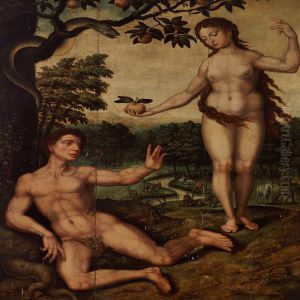Jan Gerritsz Heemskerck Paintings
Maarten van Heemskerck, sometimes known as Jan Gerritsz van Heemskerck, was a Dutch painter renowned for his portraiture, religious subjects, and allegorical scenes. Born in 1498 in the town of Heemskerk, which is located in the modern province of North Holland, Netherlands, he was one of the leading Northern Mannerist artists of his time.
Heemskerck's initial training was with the painter Cornelis Willemsz in Haarlem. In 1527, he traveled to Delft and The Hague, which greatly influenced his artistic development. By 1532, he had moved to Haarlem and became a member of the Haarlem Guild of Saint Luke. His early works were greatly influenced by the Haarlem school and the leading artist of the time, Jan van Scorel, whom he may have met or worked with during his early phase.
The turning point in Heemskerck's career came with his journey to Italy, a common practice among artists of the time seeking to further their education and experience. Heemskerck spent a significant period in Rome from 1532 to 1536 or 1537, where he studied the works of the Italian masters, particularly Michelangelo, whose influence would become evident in his later works. His drawings of Roman ruins and antiquities also gained attention, reflecting the Renaissance interest in the Classical past.
Upon his return to the Netherlands, Heemskerck's style had markedly changed, infused with the grandeur and complexity of the Italian Renaissance. He worked on numerous commissions for altarpieces and other religious works, as well as mythological and historical scenes. A notable work from this period is his series of paintings depicting the Seven Wonders of the World, which combined both his interest in the classical world and his imaginative Mannerist style.
Heemskerck was also a prolific portraitist, and his portraits are celebrated for their psychological depth and attention to detail. He was one of the first northern artists to portray the human figure with a strong sense of anatomy, a skill he honed during his Italian sojourn.
Heemskerck's work was highly sought after during his lifetime, and his influence extended to many Dutch and Flemish artists who looked to his blend of Northern realism and Italianate style as a model. He continued to work and live in Haarlem until his death in 1574. His legacy is preserved in numerous works held in collections and museums across the world, and he remains a significant figure in the history of Dutch Renaissance art.
